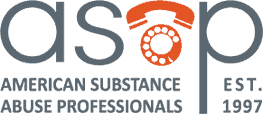The NRC will soon issue in the Federal Register a proposed rulemaking to amend the drug testing requirements of the Fitness for Duty (FFD) Program in 10 CFR Part 26. The proposed rule seeks to align the NRC’s drug testing requirements in Part 26 with the US Department of Health and Human Services’ (HHS’s) 2008 Mandatory Guidelines for Federal Workplace Drug Testing Programs (the 2008 Guidelines). The NRC is expected to publish the proposed rule in the coming weeks, but the draft rule with comments from the Commission is available, as well as the NRC Staff’s Draft Regulatory Analysis and Backfitting and Issue Finality.
The NRC last updated its drug testing requirements in March 2008, but HHS did not issue the 2008 Guidelines until November 2008. The NRC Staff decided to forgo another round of rulemaking to align Part 26 with the 2008 Guidelines in such close succession. Instead, the NRC Staff worked with the industry to institute a voluntary reporting system for FFD testing violations. The NRC Staff also began evaluating the effectiveness of the drug testing program changes implemented under the 2008 Guidelines. In February 2017, the NRC Staff sought Commission approval to publish a proposed rule to align the NRC’s FFD drug testing program with the 2008 Guidelines. The Commission approved this request in May 2019, subject to certain changes to the draft rule.
In approving the rulemaking, the commissioners commented on the draft rule and NRC’s drug testing program, expressing concern with the time lag between HHS’s 2008 Guidelines and the NRC Staff’s update to Part 26. Chairman Svinicki asked the Staff to provide the Commission with a forecast of the next rulemaking to update to the NRC’s drug testing requirements. The commissioners also noted that HHS has since issued several updates to the 2008 Guidelines, but that these updates are not in the draft rule. To address this issue, the Commission asked the NRC Staff to seek public comment on adding the updates to the final rule. And Commissioner Wright asked the Staff to consider whether incorporating HHS guidelines by reference in Part 26 would be more efficient than repeated rulemakings. Read the comments from Chairman Svinicki and Commissioner Baran and the comments from Commissioner Caputo and Commissioner Wright.
According to the NRC Staff’s draft regulatory analysis, the rule would increase detection of individuals who are not fit for duty because of illegal drug use, legal drug misuse, or an attempt to subvert the drug testing process. Major provisions of the proposed rule would lower the initial and confirmatory drug testing cutoff levels for amphetamines and cocaine metabolites to increase the “window of detection”; add initial drug testing for 6-acetylmorphine (6-AM), a metabolite of heroin, and update the confirmatory drug testing method for 6-AM; add initial and confirmatory drug testing for two illegal amphetamine-based ecstasy-type drugs; strengthen methods for detecting subversion attempts by enhancing the testing for drugs and drub metabolites in urine specimens with dilute validity test results and specimens collected under direct observation; and enhance donor protection by requiring medical review officer evaluation of the elapsed time from specimen collection to testing and exposure to high temperature as possible causes for some invalid test results.
The NRC Staff estimates that, if adopted, the proposed rule would lead to a 10–12% increase in the number of individuals testing positive for using illegal drugs, misusing legal drugs, or trying to subvert the drug testing process. And the Staff claims that the proposed rule would enhance the ability of licensees to identify additional individuals using drugs, thereby substantially increasing the safety and security of licensed facilities. The NRC Staff estimates the total cost of the proposed rule to the industry would include a one-time cost of $337,100 ($5,031 average cost per site) and annual costs of $168,600 ($2,516 average annual cost per site). The total costs to the industry over 25 years (using a 7% discount rate) would be $2.2 million.
Because the proposed rule would require licensees to update existing FFD program policies and procedures, conduct training, revise contracts with HHS-certified laboratories, perform mandatory special analyses testing on some specimens, and modify the drug testing panel, it constitutes a “backfit” as defined in 10 CFR 50.109. It must therefore satisfy the requirements of 10 CFR 50.109(a)(3) and 10 CFR 70.76(a)(3) and the issue finality requirements of 10 CFR 52.98(g). These provisions require the Commission to determine that the proposed drug testing requirements would (1) substantially increase the overall protection of public health and safety or the common defense and security, and (2) that the costs are justified because of this increase in protection.
The NRC Staff concluded that the proposed rule would substantially increase public health and safety because of the estimated 10–12% increase in positive test results, which would lead to those individuals being denied access authorization to licensed facilities. The Staff based this estimate on a comparison of calendar year 2014 FFD program performance data with data from prior years and “other indicators” that the NRC Staff claims suggest year-over-year increases in positive results for amphetamines. The NRC Staff also factored into this estimate the effect of the lowering of cutoff levels for multiple substances and addition of new substances to the testing panel.
The NRC Staff concedes, however, that they could not quantify or monetize most of the benefits of the proposed rule, and that if adopted as a final rule, the safety and security benefits assigned by the Commission must be greater than $2.2 million for the rule to have a positive net benefit. The NRC Staff’s position is that the low cost of the proposed rule justifies its implementation because the increased detection of drug use would provide a substantial increase in the overall protection of public health and safety and the common defense and security. Commissioners Baran and Caputo noted their agreement with the Staff’s analysis in their comments approving the rulemaking.
We will continue to monitor this rulemaking as it moves forward.

